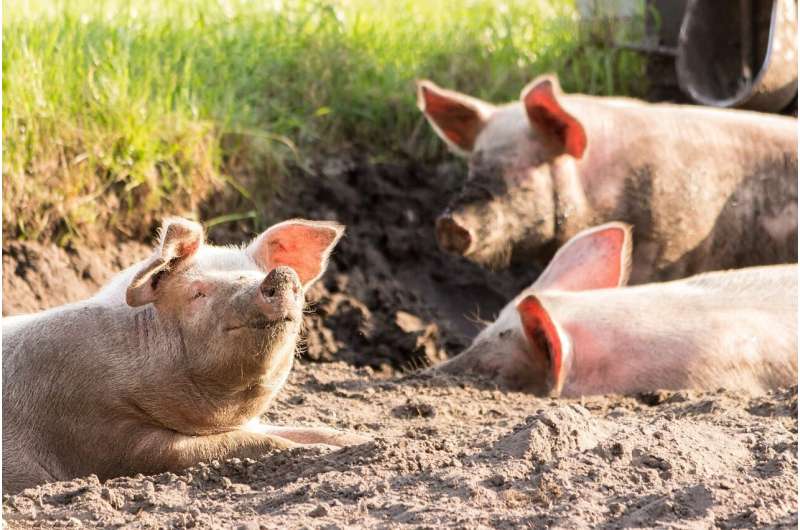
A team of bio-scientists affiliated with a host of institutions across the U.S. has developed a gene editing technique to produce newborn pigs immune to porcine reproductive and respiratory syndrome, also known as blue-ear pig disease. The paper is published in The CRISPR Journal.
In the 1980s, blue-ear pig disease had become a serious global problem. Symptoms include respiratory distress, problems reproducing and a high fatality rate in piglets, and the disease was eating into profits. Since that time, a host of drugs have been developed to treat the symptoms of the disease, but thus far, no cure has been found. For this new study, the researchers looked instead at ways of preventing pigs from contracting the disease in the first place.
Study of the virus responsible for the disease showed that it preferred to bind to a cell surface protein called CD163, which allowed it to infect the cell and replicate. To prevent pigs from being infected, the research team tested inhibition of CD163 production in pigs and found that pigs could survive with no discernable side effects.
That led them to use the CRISPR gene editing tool to remove the part of the DNA that was responsible for its production. Pigs grown from edited fertilized eggs were found to be immune to the disease. The researchers propose that rather than forcing farmers to edit the genes of their pigs, they instead could be allowed to purchase edited sperm cells.
The researchers state that over time, as the pigs bred using edited genes grow to maturity and mate, they would pass on the edited gene, until eventually, all the pigs on a given farm would have the gene and the farmer would no longer have to worry about blue-ear pig disease.
More testing is required to make sure that editing the CD163 does not result in other problems, either for the pigs or the people who eventually consume them. Also, there remains the issue of addressing the reason for the development of blue-ear pig disease and others like it—raising livestock in crowded conditions.
More information:
Brian T. Burger et al, Generation of a Commercial-Scale Founder Population of Porcine Reproductive and Respiratory Syndrome Virus Resistant Pigs Using CRISPR-Cas, The CRISPR Journal (2024). DOI: 10.1089/crispr.2023.0061
© 2024 Science X Network
Citation:
Using CRISPR gene editing to prevent pigs from getting blue-ear pig disease (2024, February 26)
retrieved 26 February 2024
from https://phys.org/news/2024-02-crispr-gene-pigs-blue-ear.html
This document is subject to copyright. Apart from any fair dealing for the purpose of private study or research, no
part may be reproduced without the written permission. The content is provided for information purposes only.







